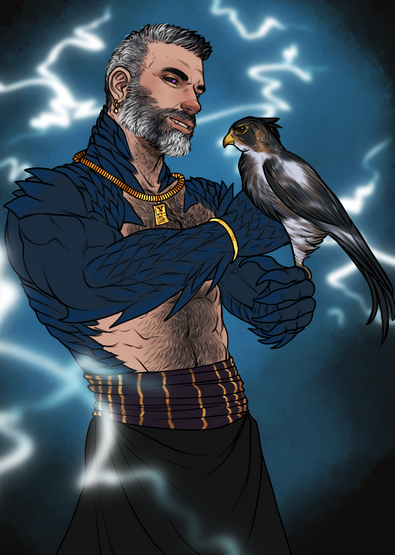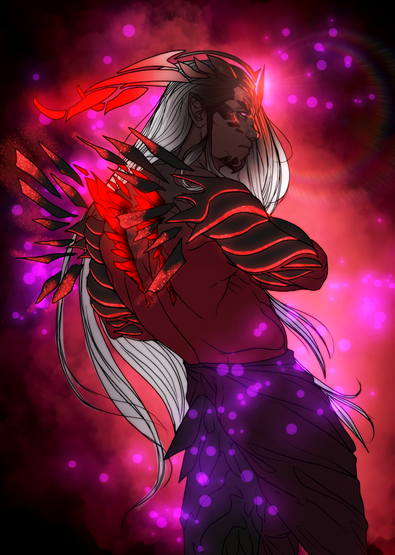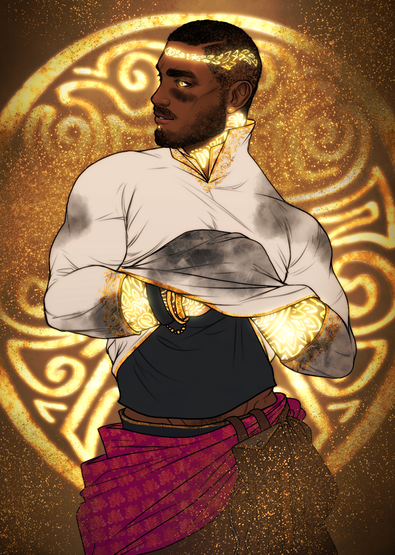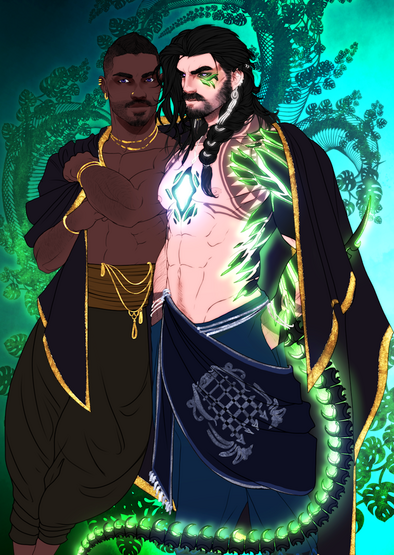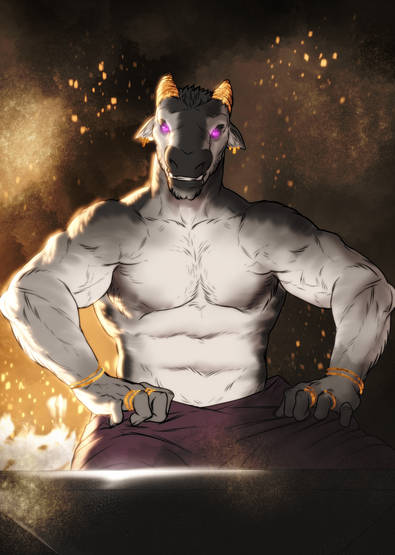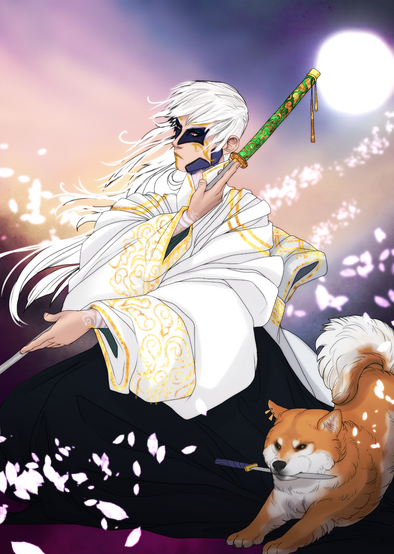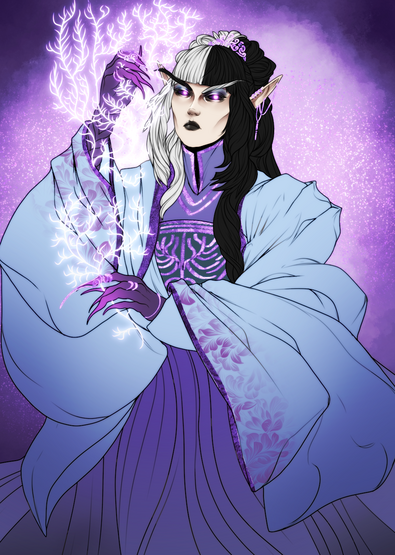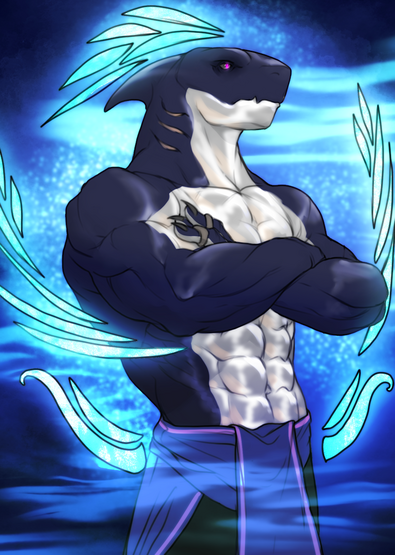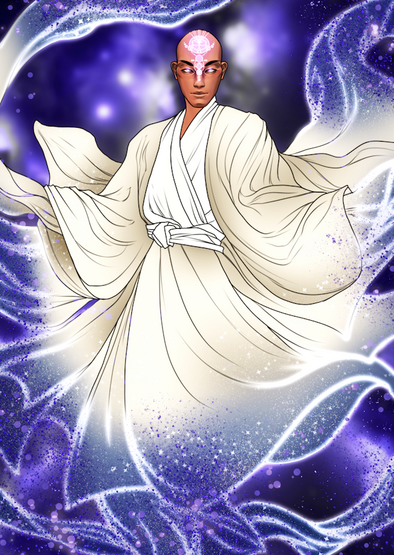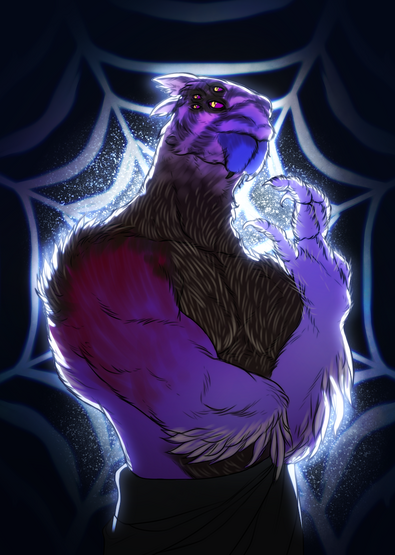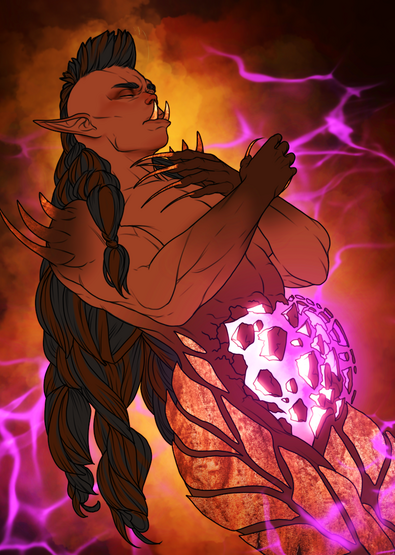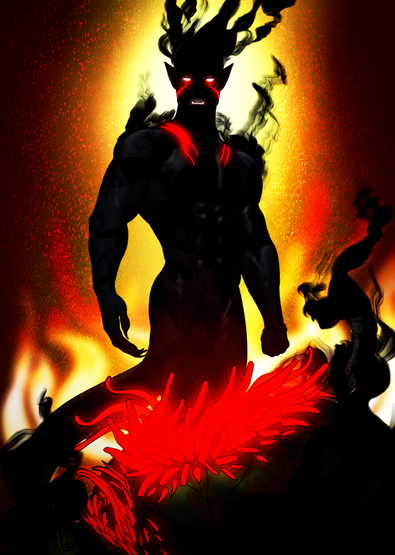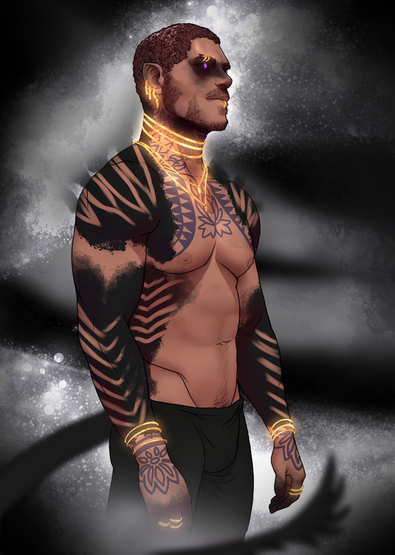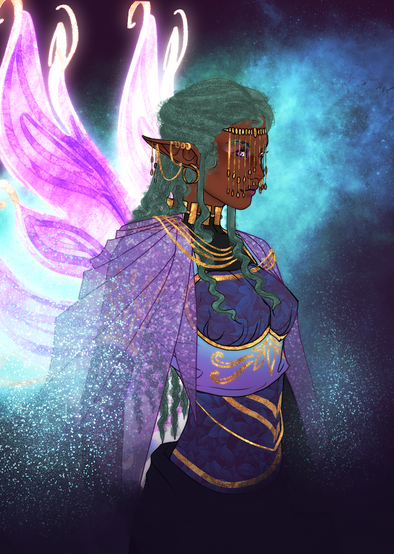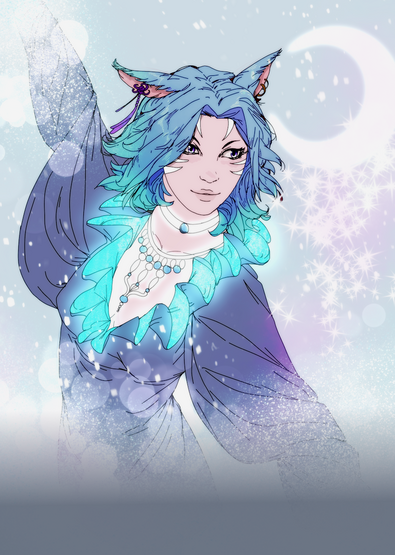More actions
No edit summary |
m →Trivia |
||
| (35 intermediate revisions by 5 users not shown) | |||
| Line 1: | Line 1: | ||
Draconism as a Religion represents an organized faith of worshiping Dragons. Dragons are a specific class of being, somewhere in between an ancient civilization of immortals, and technicians who keep the basic functions of the world running. While many other Religions are about the Gods teaching mortals virtues and sins and guiding them to live a good life in worship and being, Dragons are less sentimental about worship, and rather take mortals on a journey with them in the operation of the world and preservation of life against outside foes. | |||
==Origins== | ==Origins== | ||
Draconism | Draconism has invariably existed for all of time, but never quite in the same shape or form. Every cycle of civilization has had some form of Dragon worship, some more popular than others, with different Dragons, and different ideals. The modern version of Draconism first came into being among the early Ailor tribes and the Allorn Empire, which always contained some waning and waxing population of Dragon Cultists. Up until the Cataclysm, Draconism was a deeply disorganized religion with different cults and beliefs held in nearly every country. When Cataclysm happened, many of the Dragons disappeared, some mysteriously, others with a clear message that the time of Dragons was over. This Long Death as it was later referred to, lasted for 300 years, until the Dragons came back one by one, and proclaimed an end to the Long Death, based on a breakdown of the consensus among them about the intentions of passing the Mantle of Creation to mortals. Since coming back, the Dragons have made efforts to organize Draconism into an actual fully fledged Religion, to acknowledge and reward their followers for their belief, even if unlike other Gods they are not strictly incentivized to seek out worship, and sometimes even seem uncomfortable with the idea. | ||
=== | ==Core Beliefs== | ||
===Central Message=== | |||
== | The central message of the Draconism faith is that there is no true purpose to anything but the continuation and expression of life itself. Draconism acts as a shield against unnatural death, but also as a guarantor of the perpetual cycle of life and death so that reality itself can perpetually experience all the colorful and vibrant expressions of being alive. There are no virtues or vices to be expected of Mortals, with the only real demand that Dragons have, being to obey their rulings towards The Presence, and to preserve life and free will around the world. Any believer passing into the afterlife has their soul raised up to the cosmos, and turned into one of many countless stars from where the living can gaze up at a memory of them. No separate section with information about the Afterlife will be provided because there is nothing else to be said about it. | ||
===Mantle of Creation=== | |||
The Mantle of Creation is a concept held by Dragons that informs a more technical approach to Draconism. Dragons control the various functions of the world of Aloria, from the cycle of birth and death, to the patterns of weather, material existence, the passage of time, and so forth. The world functions because they continue to make it function, and in some way, that can be cause for mortals to hold them as Gods to give thanks and praise for the reality they have created and enabled. To many, the Dragons are distant and mysterious, because they do not always explain their actions or intentions. The Mantle of Creation has a lot of implications, discussed further down in the Expanded Lore section, but for now only a short introduction will suffice. | |||
===The Presence=== | |||
The Dragons are technical managers of the world, and as such to them, things from the Void, Exist, and Beyond are alien. While for thousands of years they fought against the invasions of Demons and Dark Gods, they could never fully rid the world of this alien intrusion and have eventually come to terms that The Presence is here, and here to stay. The Presence refers to all things not of Aloria, anything that is Magical from another Plane of Reality or Existence, anything that was created by Dark Gods like Vampires or Mortisphages. The Presence is something that Dragons still struggle with on a daily basis, and their attitudes towards it informs much of the daily activities of their worshipers and followers. | |||
==Gods and Goddesses== | ==Gods and Goddesses== | ||
Draconism has | Draconism has one unified pantheon, but the pantheon is split in 3 factions. These factions represent intentions towards The Presence (anything Occult/Magical). All Draconists should worship all Dragons, but can choose one Dragon to be their Patron. They must also choose a Faction which they align with on principle. However, their faction alignment does not need to be the same as their Patron Dragon. Note that while all Dragons are massive Dragons in their natural form, they are artistically rendered in their humanoid form here, which they more commonly use to appear before mortals. | ||
< | ===The Dragon Gods of Consolidation=== | ||
The Dragon Gods of Consolidation represent the desire to create space for The Presence, but with compromises. They wish Spirits Nature Bound, and their Magic cleansed to God Magic. They wish Mages to be included, but to never use Sinistral Magic. And finally, they wish to continue the fight against the Afflicted, believing them to have no place in the world. This makes the Consolidation Dragons comfortable as the centrist faction that tries to make some concessions, but play the middle ground. | |||
<gallery mode="packed-overlay" widths="250px" heights="370px"> | |||
File:Cedragoin.png|''Regulus, Time Dragon'' | |||
File:Voiddragon.png|''Triton, War Dragon'' | |||
File:Yayh.png|''Marik, Leytech Dragon'' | |||
File:New Canvadddsrtetgr.png|''Gaia, Nature Dragon'' | |||
File:Silasvilkensit.png|''Silas, Shaper Dragon'' | |||
* ''' | </gallery> | ||
* '''Regulus''' Regulus is the King of Dragons, the leader of the entire pantheon, and the mediator between the various Dragon Gods and their realms. While this is his primary function, Regulus is also a Time Dragon who controls the flow of time, and rain and thunder across Aloria. He is traditionally associated with lightning and blue scales. Regulus once lived as a mortal Prince of the Regalian Empire, but was discovered to carry the Dragonsoul that sparked the revival of the Dragons. | |||
* '''Triton''' Triton is the Dragon of War, but imprisoned in the Void as an Evolist God also. When Caius entered the Void upon its first opening, his soul was split in two, the other half being Triton that embodied his rage for revenge and conflict. Triton was re-admitted into the Dragon Pantheon despite his Void-corruption, and eventually took on the role of the martial Dragon who represents all soldiers and warriors and military conflict. He is associated with chains and black scales. | |||
* ''' | * '''Marik''' Marik is the Dragon of Leytech or more broadly speaking technology. He is the original creator of the Leylines and the Leysites, ancient Dragon ruins and temples which hold great Draconic Magic and machinery to serve their cause. Marik was tricked by the Machinist Death God to cause the destruction of the Skyborn Empire in the Great Storm, and since being reborn, has been working to mend the conflict between Skyborn and Dragonkin. He is associated with machines and bronze scales. | ||
* '''Gaia''' Gaia is the Dragon of Nature who creates all plantlife. Gaia was killed by the Allorn Empire, but his Dragonsoul was preserved and merged with the ex-Death God Iorwerth who would then carry his power as penance for his role as Death God. Iorwerth also brings architecture and construction to Gaia's powers, and has become a symbol of redemption. While he is traditionally associated with indigo scales and flora, due to his Ordial corruption he also shows Death Metal and Ordial hues. | |||
* ''' | * '''Silas''' Silas is the Dragon of shaping, making, and crafting. He inspires the combination and processing of raw materials into objects of beauty and function, and it is said the first swords of any civilization are forged inspired by his scales. Silas seeds the world with precious minerals and holds the Dragonforges from which the machine parts are produced which Marik builds his machines out of. Silas is associated with the fires of industry, metallurgy, and his silver scales. | ||
===The Dragon Gods of Annexation=== | |||
The Dragon Gods of Annexation represent the fire to create space for The Presence, but only on their terms. They wish Spirits Shard Bound, and their Magic removed altogether. They wish Mages to be included, but to never use Sinistral Magic and to minimize Magic usage at all. And finally, they wish to continue the fight against the Afflicted. This makes the Annexation Dragons comfortable as the conservative faction that tries to maintain some sense of the old Immortal War policies. | |||
<gallery mode="packed-overlay" widths="250px" heights="370px"> | |||
File:New Canvashgfhgnfgg&hhhh.png|''Severena, Protector Dragon'' | |||
File:Auroragoddess.png|''Aurora, Life Dragon'' | |||
File:Dueuaj.png|''Nox, Knowledge Dragon'' | |||
File:Orionbsle.png|''Orion, Afterlife Dragon'' | |||
File:EerkUntitled Artwork.png|''Julianus, Wisdom Dragon'' | |||
</gallery> | |||
* ''' | * '''Severena''' Severena is the Dragon of Protection and of guidance and mentorship. She inspires all to shepherd and shield others from mistakes and harm, and empowers her followers to protect the weak from harm. Severena is also called the Dreamer Dragon, as though she did not die, she entered a long slumber which froze the Jade Sea, and henceforth only communicates to her people through dreams. Severena is traditionally associated with clouds, jade, and her pearlescent green scales. | ||
* '''Aurora''' Aurora is the Dragon of Life and Creation, who designs and breathes life into all species and creatures, particularly fauna. Through her magic, childbirth is woven into the world, and by her will, life marches on despite all obstacles. Aurora was tricked by the Glacial Death God, causing a coldsnap in Ellador that killed many Dwarves and made the Isldar. Even though the truth is revealed, she remains distant. She is associated with comets and her purple scales. | |||
* '''Nox''' Nox is the Knowledge Dragon, a famed trickster and plotter who charts his own course sometimes in contravention of other Dragons. Nox gathers knowledge and information from the ages, but in one of his plots, he was condemned to a mirror world for violating the laws of creation of Aurora. Even here, he continued to plot with his chosen favorites the Slizzar, to influence world events, all the way up to his release. He is associated with mirrors, teal, and his chrome scales. | |||
* '''Orion''' Orion is the Dragon steward of the Afterlife, the only Dragon not physically residing on Aloria but with the stars. Orion is a detached entity with total spiritual and mental tranquility and detachment from want and need. He guides the dead into the afterlife, and teaches the living respect for the dead and the rites of passage. He is traditionally associated with all manners of cosmic symbolism and monk-like aesthetics, as well as his ivory scales. | |||
* '''Julianus''' Julianus is the Dragon of Wisdom and Insight. He is a purely logic-driven God that shows little compassion for the individual, but is instead condemned to see the perpetual outcome of each action and each choice for all eternity. Julianus informs the Dragons on the correct course of their actions across the world, even if the immediate outcome is unclear, as he sees in centuries and millennia. Julianus is associated with spiders and silken threads, and his lavender scales. | |||
===The Dragon Gods of Succession=== | |||
The Dragon Gods of Succession represent the desire to create space for The Presence, with as few rules as possible. They wish Spirits Nature Bound, but hold no further demands. They wish Mages included, but wish only for Sinistral Magic to be used in times of desperate need, as Dragons can mend the world. And finally, they wish to continue the fight against Afflicted, but to show them compassion and forgiveness. This makes the Succession Dragons comfortable as the Progressive faction with new ideas. | |||
< | <gallery mode="packed-overlay" widths="250px" heights="370px"> | ||
File:Dreamdragon.png|''Daiana, Ancestor Dragon'' | |||
File:Untitled Artwork-3 3jtds.png|''Cinerius, Passion Dragon'' | |||
File:Monkeydragongod.png|''Umbra, Death Dragon'' | |||
File:FeliculaNew Canvasytgfjf.png|''Felicula, Arcana Dragon'' | |||
File:LunaaNew Canvashryerthtrfd2j.png|''Luna, Companion Dragon'' | |||
| | </gallery> | ||
* '''Daiana''' Daiana is Dragon and Aloria itself. Her body is the planet and her thoughts are the deepest planet's core. She is the lady of all the elements that fuel the world, but also a maternal representation of ancestry and descendants, that allows the soul rivers to flow across her surface to find new inception of life. Daiana never appears in person, and is always slumbering, sometimes even dreaming up dragons and people. She is associated with spirits and gray stone. | |||
* '''Cinerius''' Cinerius is the Dragon of Passion and Love. He was born in the death of Caius the previous war and passion God, rotten after millennia of suffering a Void blight. Cinerius in his rebirth became so much more concentrated passion and desire, that his very form is impossible to gaze upon without going mad with want and shame. He is the Dragon of family and any emotion or feeling that gives color to life. He is associated with fire and his red scales. | |||
* '''Umbra''' Umbra is the Death God, a just arbitrator of necessary but elegant and beautiful death. To Umbra, the concept of death itself is fascinating, and a seed for rebirth and renewal that represents the very core of existence itself. He is the necessity of death, and the justiciar of necessary death to preserve the lives of others. He is generally considered with some suspicion, due to plotting his own plans. He is associated with shadows and his pristine white scales. | |||
* ''' | * '''Felicula''' Felicula is the Magic Dragon, responsible for the fueling of all Dragon Magic and orchestrating reality's rules regarding the usage of Magic. It is through her gifts that the Archon and other Draconic warriors, priests, and servants are empowered to do their work and the bidding of their Gods. Felicula is considered skittish and small, but one of the most powerful Dragons due to her control of the Magic used by others. She is associated with song, and her yellow scales. | ||
* '''Luna''' Luna is the Companion Dragon, which is a broad understanding of compassion, kindness, and social cohesion. She encourages a togetherness and celebrates the companionship of friends and allies, to kindle a warmth in social bonds that can withstand even the coldest of winter trials. In a way, her association with the moon casts her as a companion of Daiana, leading some to speculate she may be a physical manifestation of the Moon. She is associated with ice, and cyan scales. | |||
* ''' | |||
==Priesthood== | |||
Priesthood for Draconism is more complicated than one might assume at first glance from a Religion that was effectively dead for 300-odd years while most Dragons were either in slumber, or in a near-death state. At the end of the Immortal War, the Dragons decreed that the Mantle of Creation (the theoretical stewardship over the world's functions) was to pass to mortals, and that they too would become mortal (explanation on why they did this is further below). As this occurred around Cataclysm, Draconism as a Religion was effectively dead for 300 years except for among the Sihai where the Dragons could still be visited, or the Isldar who were deceived. Still, when the Dragons returned centuries later, they found that much of the priesthood had survived their absence and that in some places, the faith had even grown. The Religion had always been considered more of a curiosity by the Dragons, who never asked to be worshiped, or set out to have a Religion specifically ordained by them. They fully expected everyone to give up on the Religion when they left, but the fact they had not, caused a change to occur. | |||
* ''' | |||
The structures that were still very much in place, were the hierarchy set out before the Immortal War that had more or less survived. At the head of all the priesthood were the Matrons (a non-gendered term) that applied to the single most favored of each Dragon God. Each God had their own Matron, a mortal who would have their favor, and know most personally their wishes and ambitions for the world, and could translate them to the other faithful. This position was often elective, but some Matrons passed their lineage from generation to generation, which became especially common after the Denial of Immortality. The only Matron succession that had not survived, was Regulus's Matron, who was eventually chosen from the Isldar to be Gwenyth Zylmoira, leading the faithful into a new era. | |||
Below the Matrons, are the Dragon Priests. Dragon Priests represent the whole religion, but usually specialize in the teachings of a specific Dragon God as their patron, and emphasize their qualities and teachings above the others. Generally speaking though, Dragon Priests should be aware of all other Dragons just as much, and be able to hold their own in theological discussion on the merits and values of the other Dragons too, but also understand the overarching narrative of Draconism as a whole. It is possible to be a Dragon Priest and hold other occupations, as Dragon Priesthood is more of a personal choice than an ordained position. There is no official academy or place of teaching for Priests, the only real requirement is that each self-ordained priest takes a pilgrimage to the Matron of their Patron God, and seeks approval from them. | |||
Below the Dragon Priests are the Dragon Champions. Unlike Dragon Priests, Dragon Champions do not widely act as priests, they are more akin to lay-priests but hold an extreme emphasis on specific Dragon Gods. Anyone can be a Dragon Champion, it is in most cases self-declared, but 9 out of 10 Dragon Champions are warriors because they enforce the might and will of their Dragon usually by the sword. This may lead to some comical arrangements, with Felicula Dragon Champions forcing participants to have a party and be happy, with the threat of physical harm if they do not. Dragon Champions can administer religious services, but only specifically to their own patron God, while Dragon Priests can perform more general and wide-spread religious services. | |||
==Expanded Lore== | |||
The Expanded Lore section contains additional contextual information about the Draconist faith. This section is not necessary to read to get a good understanding of the lore, just the background information. | |||
===Festivals and Worship=== | |||
The [[Draconism Expanded]] Page contains information on Draconism Holy days (one each month), as well as basic rituals performed by Draconism Priests for the faithful. This Page is useful to read for upcoming festivals, but is not necessary to fully explore unless an event is actually upcoming and pinned to the calendar. The bottom of the page contains information relevant to Draconism Priests. | |||
* ''' | ===The Advancement=== | ||
The Advancement as an event began with the death of Caius. Caius had been suffering from the Void Infection for millennia, and his eventual demise was guaranteed and even foreseen. For all this time, it was Umbra who ordained that the only way to solve Caius's condition, was to remove all Magical things form the world, so that the connection between the Void and Aloria could be severed. Indeed, historical events implied that this was correct, because after each Void Invasion, Caius's condition would improve for some time as most Magic was seeped from the world, only for it to return as Mages became more prevalent. There is some healthy room for discussion to determine whether Umbra was right, whether he was wrong, or whether he obfuscated the truth on purpose. This theory would not imply that Umbra is specifically malicious or treasonous to the Draconic cause, but that he might have stretched the truth to keep the Draconic cause busy with the wrong type of cure, to guarantee Caius's death just to see what would happen if he did die, which would be consistent with his death-god obsession with the beauty of death. | |||
Whatever the motivations or circumstances, the event of Caius's death and Cinerius's rebirth from his corpse was cause enough to call for a full conclave. With the beginning of the conclave, it became evident that Regulus was not satisfied with a partial conclave, and so he called down Orion, something that had not been done for thousands of years. Following this, the conclave was convinced to rescind the punishment of Nox. It had become pretty clear in the past few millennia that being punished was part of Nox's plan all along, and that being trapped in the mirror dimension as he was, that he was difficult to keep tabs on by the other Dragons. His habit to be secretive and have plots detached from the common Draconic cause was considered a liability, and perhaps in part, Nox was proved right by the endless cycles of free-will causing the same outcome one way or another. Indeed, the very reversal of the Denial of Immortality was reason enough to claim that the rhetoric used by Nox to create the Slizzar was at least in part right. | |||
With all the Dragons re-convened, the conclusion was made that the impassioned guidance of the Dragons was in part to blame for the chaotic existence of their followers, and that their unclear and mysterious attitude to the sequence of history in the world, also had a part to play in the repeating cycles of destruction. As such, Regulus decreed that all Dragons should contribute to formulating a dogma, and that the Radicals that had come about because of his chaotic return to power, should all be dismissed. Despite these lofty and ambitious intentions, the conclave wasn't a complete success. The Dragons still could not decide on a common policy towards the Infection, even if they chose a more benign term calling it the Presence instead. While the intention had been to unify all Dragons under one policy, Regulus's mediated middle ground wasn't radical enough for either the pro, or anti-Magic side, and so the conclave was split three ways, which all things considered was an improvement over a 15-way split. | |||
===Old Believers=== | |||
Draconism has a variety of smaller regional Cults called Old Believers. The Old Believers hold onto the [[Draconism Radicals]] as they were before The Advancement. Choosing to play an Old Believer is not recommended, because it cuts a Character off from the other Draconism worshipers. Even though Old Believers are not strictly heretics, they might be excluded from social activities or Pantheon-related quests. Old Believer information is preserved specifically for Character who felt betrayed by The Advancement, or sensed a sinister intention in the actions of Umbra, and want to continue Caius's Burning Extermination. | |||
===Dragon Types=== | |||
Dragons are not singular, there exist not just 15 Dragons in the world, but technically hundreds, and even different categories. To make sense of the various categories, this section will explain the differences. | |||
* '''Dragon-Gods''' are the leaders of so-called Clades. Clades are groupings of Dragons that are all of the same type. For example, the Blue Clade belongs to Regulus the Blue Dragon. All of these Blue Dragons control time and rain and storm, but only the Dragon God Regulus is considered a God. The other Clade Dragons are still considered divine, but their power is inherited from the Dragon-God, who holds absolute authority. The other Clade Dragons should be considered like right-hands because Dragons are not omnipotent or omniscient, and can't be everywhere at once. | |||
* '''Clade Dragons''' are the afore-described right-hands of the Dragons. Clade Dragons do not have a consistent number, for example, Regulus has only 6, while Marik has 30 (though many of them remain dead). Clade Dragons appear identical to their Dragon-Gods, but there is no common trend between what certain Dragons look like. The only true commonality is that all true Dragons are massive, sometimes as large as mountains, and thus compare with the Primeval Beings in size. True Dragons can have four legs, only two, six, or none at all. Sometimes they have wings, other times they do not. Sometimes they are long, or stubby, or slither around. | |||
* '''Drakon''' are mortal versions of Dragons that nonetheless live for centuries. It is somewhat unclear if they are directly related to Dragon-Gods or Clade Dragons, or were created to come too close to them in appearance. Drakon always appear like the traditional understanding of a wyvern with two large wings which it can support itself on, two hind legs, a long neck and a long tail. Drakon are large but never quite as massive as true Dragons, being about the size of a Regalia Frigate. Drakon have no inherent Magic, but do have an elemental breath that depends on the Dragon they belong to. For example, Regulus Drakon can breathe lightning, while Cinerius Drakon breathe fire, and Silas Drakon breathe sharp silver shrapnel, and Felicular Drakon breathe ethereal Magic. Drakon are primarily war beasts used by the Dragons to fight Arken and Demons. Only in very rare cases will a Dragon send a Drakon to act as mount for a chosen person for their task. | |||
* '''Drakes''' (often also called Wyverns) are mortal versions of Dragons that live for several centuries but are much smaller than Drakon. Wyvern are just larger than a war-horse, allowing them to comfortable carry multiple persons on their back, but not able to tear down whole buildings like Drakon could. Drakes were created specifically as flying mounts for the Archon and Dragon Champions, and usually bond with mortals as their personal mount. Drakes do not possess any Magic, appear with the same appearance traits as Drakon, and also do not have an elemental breath. | |||
* '''Draconet''' are small mortal versions of Drakes that are no larger than dog-sized. What their exact purpose was is unclear, unlike Drakes and Drakon they have four legs and thus can move around like most mammals, but rarely fly despite being able to do so. Draconets are occasionally kept as pets by worshipers though they are exceedingly rare to find, and usually have to be raised from an egg to acquire the right calm temperament. Draconets were considered a prized possession during the Allorn Empire, but overhunting of their native populations has effectively driven them to extinction in the wild, with only select eggs being held onto for centuries until they hatch for the right person in unclear conditions. | |||
* ''' | |||
===Dragon or Primeval=== | |||
* ''' | To cast aside presumptions, Dragons are distinctly not Primeval. While Dragons rarely speak about the pre-Seraph history and existence of the world, they have made clear statements about the idea that when they first awoke, that the Primeval Beings were already there. The only Primeval Beings that the Dragons have ever spoken about, were the Everwatcher, the Blind One, and the Covenant, though for the Covenant she went by a different name and appearance. Dragons believe Primevals to be more powerful than them, and some speculate that in the eternal cycle of creation, that the Primevals actually created Dragons, who in turn created mortals and other Gods, though this is exceedingly hard to prove. There is effectively no communication between the Dragons and the Primeval Beings. The Everwatcher only speaks to the Vessel of Unionism and does so cryptically, the Blind One is in a state of eternal unconscious binding by its followers to prevent it from awakening, while the Covenant seems lost in some higher state of being that makes her interactions with the world seem more instinctual than calculated. The Dragons urge utter caution when attempting to interact or learn more about the Primeval Beings, because what is unknowable to Dragons, will surely spell doom for the mind of mortals. | ||
===God Dreams=== | |||
* ''' | Dragons create Gods, flat-out. It is necessary to discuss this topic to dissuade furthering logic that because Dragons create Gods, that other Religions are fake and that Dragons should be worshiped instead as the only correct Gods. This is far from the truth, and actively against the intentions of the Dragons even. To first examine how other Gods are made, they are barely tangentially made by Dragons. When enough people on Aloria wish or crave for something, it is often through the optic of divine protection or saving. People generally gravitate in situations of despair and suffering, to wishing for a higher power to wisk them away and protect them, and this naturally becomes a desire for a savior-god. When enough people wish for this, all that emotional energy is felt by the planet itself, which is Daiana. Daiana dreams, but her dreams are never decided upon by herself, they are affected by the emotional energy that permeates the crust from the people living on it. And so, when enough people wish for a God, Daiana dreams of their desire, and Daiana's dreams become manifested reality. Nearly all Gods are thus born from Daiana's dreams by the template and wish provided by the people. There are some corner cases. For example, some Fornoss Gods were Arken who refracted into Godhood, and some Unionist Gods were made Gods directly by the Primeval Being the Everwatcher, but generally speaking this logic holds true. | ||
It is necessary to express that even though Daiana takes a direct role in the creation of Gods, coupled with the fact that Aurora has indirectly created all species and peoples of Aloria through biological experimentation, that this does not mean anyone owes them their life or obedience or indeed worship. The Dragons primary directive is to create and preserve life, but they take a very apathetic role towards this life after it is created and is able to survive. While the Dragons indirectly aid certain societies by sending Archon or other Dragon forces to fight The Presence, this isn't really to protect specific groups of people, but rather just to counteract The Presence. In many ways, Gods that are dreamed up by Daiana are found family, while Dragons are the actively rejecting family that wants nothing to do with mortals, unless they specifically choose to worship them. Dragons are welcoming to worshipers, but do not demand or expect worship from those who feel stronger kinship with the Gods that were born from their ancestor's wants and needs, and that have always been present to guide them and their ancestors, and will continue to be around for their descendants. This doesn't necessarily stop some Dragon worshipers from acting smug about the technical superiority of Dragons over other Gods, and it is certainly true that some Gods are very weak compared to Dragons and actively hide away from them, but that these persons are never ontologically correct with their attitude. | |||
===Heritage Alignments=== | |||
Dragons generally fulfill their own functions and have their own authority, and while technically Aurora has created most people of Aloria's ancestors, that does not fully hold up. Some heritages were created without Aurora's direct hand, and others yet were adopted by specific Dragons as their favored people. Dragons have preferences to specific heritages, like how Regulus for example always appears as an Ailor, and holds specific favor towards Ailor in particular. This section does not have any bearing to how your Character should worship the Dragons (or not worship them), it is merely added flair that allows you to build or develop a Character around the preferences of for example a patron Dragon God. It is natural that through preferences, some heritages like Kathar have no favored Dragons. This can't be helped, as not all Heritages are created equal, and just because a Dragon shows favor to a specific heritage, does not mean they hate all others. It just means their themes and symbolism can be found in these cultures, and that their cultures also inform the behavior of the Dragon in question. | |||
* '''Regulus''' appears as an Ailor, and holds particular favor towards Ailor, particularly those from Anglia, Kintyr, and Solleria. | |||
* '''Triton''' appears as an Elf, but holds no particular favor to anyone, rather favoring anything with Void Alignment instead. | |||
* '''Marik''' appears as a Skyborn, and holds particular favor for Dragonkin and Skyborn alike, though with some preference for Skyborn. | |||
* '''Gaia''' appears as an Ailor ex-Aelrrigan Knight, and holds particular favor towards Ailor, particularly those from Anglia, Kintyr and the Velheim lands. | |||
* '''Silas''' appears as an Urlan and holds particular favor towards Urlan, Dwarves, and Eronidas. Despite appearing Urlan, he did not make the Urlan. | |||
* '''Severena''' appears as a Sihai, and holds particular favor towards the Sihai. She is also directly responsible for creating the Sihai. | |||
* '''Aurora''' appears as an Isldar, and holds particular favor towards the Isldar. She created all heritages not specified otherwise in this list. | |||
* '''Nox''' appears as a Mai-Allar and holds particular favor towards the Slizzar and Allar. He created the Slizzar, which is why he was imprisoned. | |||
* '''Orion''' appears as a Sihai, and holds particular favor towards the Sihai and Lanlath, though he was not related to the creation of either. | |||
* '''Julianus''' appears as a Narim, and holds particular favor towards the Narim and Urlan. Though, he did not make the Narim, the Meraic Civilization did. | |||
* '''Daiana''' appears as an Eronidas, and holds particular favor towards the Eronidas and Velheim Ailor. She is also very fond of Spirits of any kind. | |||
* '''Cinerius''' appears as an Eronidas, and holds particular favor towards the Eronidas and Maquixtl. He is somehow related to the Maquixtl creation, but it is unclear how. | |||
* '''Umbra''' appears as an Ailor or Elf, but holds no particular favor to anything. Umbra is fairly mysterious, and seems to shapeshift around a lot. | |||
* '''Felicula''' appears as a Minoor Elf, and holds particular favor towards all Elves and Allar, though she holds no part in the creation of any. | |||
* '''Luna''' appears as a Half-Asha, and holds particular favor towards Asha, but has no role in their creation, as the Meraic Civilization made them. | |||
== | |||
* ''' | |||
* ''' | |||
* ''' | |||
* ''' | |||
==Trivia== | ==Trivia== | ||
* Draconism is technically the oldest religion, but due to constant changes in its dogma, it is now actually the youngest Religion, being exactly 1 month old at time of this article writing. | |||
* Sometimes non-named Dragons are very important. It was not by ordaining from Regulus that Dragons returned, but due to the rebellion of Renita, one of his subordinate Dragons. | |||
* Dragons should be considered a form of an advanced civilization that has acquired godhood, but inevitably, there are very limited numbers of them. The Gods just happen to be the leaders of the "Clade". | |||
{{Religion}} | {{Religion}} | ||
{{Accreditation | {{Accreditation | ||
|Artists = | |Artists = | ||
|Writers = MonMarty | |Writers = MonMarty | ||
|Processors = | |Processors = | ||
}} | }} | ||
[[category:Religion | [[category:Religion]] | ||
Revision as of 05:35, 2 September 2024
Draconism as a Religion represents an organized faith of worshiping Dragons. Dragons are a specific class of being, somewhere in between an ancient civilization of immortals, and technicians who keep the basic functions of the world running. While many other Religions are about the Gods teaching mortals virtues and sins and guiding them to live a good life in worship and being, Dragons are less sentimental about worship, and rather take mortals on a journey with them in the operation of the world and preservation of life against outside foes.
Origins
Draconism has invariably existed for all of time, but never quite in the same shape or form. Every cycle of civilization has had some form of Dragon worship, some more popular than others, with different Dragons, and different ideals. The modern version of Draconism first came into being among the early Ailor tribes and the Allorn Empire, which always contained some waning and waxing population of Dragon Cultists. Up until the Cataclysm, Draconism was a deeply disorganized religion with different cults and beliefs held in nearly every country. When Cataclysm happened, many of the Dragons disappeared, some mysteriously, others with a clear message that the time of Dragons was over. This Long Death as it was later referred to, lasted for 300 years, until the Dragons came back one by one, and proclaimed an end to the Long Death, based on a breakdown of the consensus among them about the intentions of passing the Mantle of Creation to mortals. Since coming back, the Dragons have made efforts to organize Draconism into an actual fully fledged Religion, to acknowledge and reward their followers for their belief, even if unlike other Gods they are not strictly incentivized to seek out worship, and sometimes even seem uncomfortable with the idea.
Core Beliefs
Central Message
The central message of the Draconism faith is that there is no true purpose to anything but the continuation and expression of life itself. Draconism acts as a shield against unnatural death, but also as a guarantor of the perpetual cycle of life and death so that reality itself can perpetually experience all the colorful and vibrant expressions of being alive. There are no virtues or vices to be expected of Mortals, with the only real demand that Dragons have, being to obey their rulings towards The Presence, and to preserve life and free will around the world. Any believer passing into the afterlife has their soul raised up to the cosmos, and turned into one of many countless stars from where the living can gaze up at a memory of them. No separate section with information about the Afterlife will be provided because there is nothing else to be said about it.
Mantle of Creation
The Mantle of Creation is a concept held by Dragons that informs a more technical approach to Draconism. Dragons control the various functions of the world of Aloria, from the cycle of birth and death, to the patterns of weather, material existence, the passage of time, and so forth. The world functions because they continue to make it function, and in some way, that can be cause for mortals to hold them as Gods to give thanks and praise for the reality they have created and enabled. To many, the Dragons are distant and mysterious, because they do not always explain their actions or intentions. The Mantle of Creation has a lot of implications, discussed further down in the Expanded Lore section, but for now only a short introduction will suffice.
The Presence
The Dragons are technical managers of the world, and as such to them, things from the Void, Exist, and Beyond are alien. While for thousands of years they fought against the invasions of Demons and Dark Gods, they could never fully rid the world of this alien intrusion and have eventually come to terms that The Presence is here, and here to stay. The Presence refers to all things not of Aloria, anything that is Magical from another Plane of Reality or Existence, anything that was created by Dark Gods like Vampires or Mortisphages. The Presence is something that Dragons still struggle with on a daily basis, and their attitudes towards it informs much of the daily activities of their worshipers and followers.
Gods and Goddesses
Draconism has one unified pantheon, but the pantheon is split in 3 factions. These factions represent intentions towards The Presence (anything Occult/Magical). All Draconists should worship all Dragons, but can choose one Dragon to be their Patron. They must also choose a Faction which they align with on principle. However, their faction alignment does not need to be the same as their Patron Dragon. Note that while all Dragons are massive Dragons in their natural form, they are artistically rendered in their humanoid form here, which they more commonly use to appear before mortals.
The Dragon Gods of Consolidation
The Dragon Gods of Consolidation represent the desire to create space for The Presence, but with compromises. They wish Spirits Nature Bound, and their Magic cleansed to God Magic. They wish Mages to be included, but to never use Sinistral Magic. And finally, they wish to continue the fight against the Afflicted, believing them to have no place in the world. This makes the Consolidation Dragons comfortable as the centrist faction that tries to make some concessions, but play the middle ground.
- Regulus Regulus is the King of Dragons, the leader of the entire pantheon, and the mediator between the various Dragon Gods and their realms. While this is his primary function, Regulus is also a Time Dragon who controls the flow of time, and rain and thunder across Aloria. He is traditionally associated with lightning and blue scales. Regulus once lived as a mortal Prince of the Regalian Empire, but was discovered to carry the Dragonsoul that sparked the revival of the Dragons.
- Triton Triton is the Dragon of War, but imprisoned in the Void as an Evolist God also. When Caius entered the Void upon its first opening, his soul was split in two, the other half being Triton that embodied his rage for revenge and conflict. Triton was re-admitted into the Dragon Pantheon despite his Void-corruption, and eventually took on the role of the martial Dragon who represents all soldiers and warriors and military conflict. He is associated with chains and black scales.
- Marik Marik is the Dragon of Leytech or more broadly speaking technology. He is the original creator of the Leylines and the Leysites, ancient Dragon ruins and temples which hold great Draconic Magic and machinery to serve their cause. Marik was tricked by the Machinist Death God to cause the destruction of the Skyborn Empire in the Great Storm, and since being reborn, has been working to mend the conflict between Skyborn and Dragonkin. He is associated with machines and bronze scales.
- Gaia Gaia is the Dragon of Nature who creates all plantlife. Gaia was killed by the Allorn Empire, but his Dragonsoul was preserved and merged with the ex-Death God Iorwerth who would then carry his power as penance for his role as Death God. Iorwerth also brings architecture and construction to Gaia's powers, and has become a symbol of redemption. While he is traditionally associated with indigo scales and flora, due to his Ordial corruption he also shows Death Metal and Ordial hues.
- Silas Silas is the Dragon of shaping, making, and crafting. He inspires the combination and processing of raw materials into objects of beauty and function, and it is said the first swords of any civilization are forged inspired by his scales. Silas seeds the world with precious minerals and holds the Dragonforges from which the machine parts are produced which Marik builds his machines out of. Silas is associated with the fires of industry, metallurgy, and his silver scales.
The Dragon Gods of Annexation
The Dragon Gods of Annexation represent the fire to create space for The Presence, but only on their terms. They wish Spirits Shard Bound, and their Magic removed altogether. They wish Mages to be included, but to never use Sinistral Magic and to minimize Magic usage at all. And finally, they wish to continue the fight against the Afflicted. This makes the Annexation Dragons comfortable as the conservative faction that tries to maintain some sense of the old Immortal War policies.
- Severena Severena is the Dragon of Protection and of guidance and mentorship. She inspires all to shepherd and shield others from mistakes and harm, and empowers her followers to protect the weak from harm. Severena is also called the Dreamer Dragon, as though she did not die, she entered a long slumber which froze the Jade Sea, and henceforth only communicates to her people through dreams. Severena is traditionally associated with clouds, jade, and her pearlescent green scales.
- Aurora Aurora is the Dragon of Life and Creation, who designs and breathes life into all species and creatures, particularly fauna. Through her magic, childbirth is woven into the world, and by her will, life marches on despite all obstacles. Aurora was tricked by the Glacial Death God, causing a coldsnap in Ellador that killed many Dwarves and made the Isldar. Even though the truth is revealed, she remains distant. She is associated with comets and her purple scales.
- Nox Nox is the Knowledge Dragon, a famed trickster and plotter who charts his own course sometimes in contravention of other Dragons. Nox gathers knowledge and information from the ages, but in one of his plots, he was condemned to a mirror world for violating the laws of creation of Aurora. Even here, he continued to plot with his chosen favorites the Slizzar, to influence world events, all the way up to his release. He is associated with mirrors, teal, and his chrome scales.
- Orion Orion is the Dragon steward of the Afterlife, the only Dragon not physically residing on Aloria but with the stars. Orion is a detached entity with total spiritual and mental tranquility and detachment from want and need. He guides the dead into the afterlife, and teaches the living respect for the dead and the rites of passage. He is traditionally associated with all manners of cosmic symbolism and monk-like aesthetics, as well as his ivory scales.
- Julianus Julianus is the Dragon of Wisdom and Insight. He is a purely logic-driven God that shows little compassion for the individual, but is instead condemned to see the perpetual outcome of each action and each choice for all eternity. Julianus informs the Dragons on the correct course of their actions across the world, even if the immediate outcome is unclear, as he sees in centuries and millennia. Julianus is associated with spiders and silken threads, and his lavender scales.
The Dragon Gods of Succession
The Dragon Gods of Succession represent the desire to create space for The Presence, with as few rules as possible. They wish Spirits Nature Bound, but hold no further demands. They wish Mages included, but wish only for Sinistral Magic to be used in times of desperate need, as Dragons can mend the world. And finally, they wish to continue the fight against Afflicted, but to show them compassion and forgiveness. This makes the Succession Dragons comfortable as the Progressive faction with new ideas.
- Daiana Daiana is Dragon and Aloria itself. Her body is the planet and her thoughts are the deepest planet's core. She is the lady of all the elements that fuel the world, but also a maternal representation of ancestry and descendants, that allows the soul rivers to flow across her surface to find new inception of life. Daiana never appears in person, and is always slumbering, sometimes even dreaming up dragons and people. She is associated with spirits and gray stone.
- Cinerius Cinerius is the Dragon of Passion and Love. He was born in the death of Caius the previous war and passion God, rotten after millennia of suffering a Void blight. Cinerius in his rebirth became so much more concentrated passion and desire, that his very form is impossible to gaze upon without going mad with want and shame. He is the Dragon of family and any emotion or feeling that gives color to life. He is associated with fire and his red scales.
- Umbra Umbra is the Death God, a just arbitrator of necessary but elegant and beautiful death. To Umbra, the concept of death itself is fascinating, and a seed for rebirth and renewal that represents the very core of existence itself. He is the necessity of death, and the justiciar of necessary death to preserve the lives of others. He is generally considered with some suspicion, due to plotting his own plans. He is associated with shadows and his pristine white scales.
- Felicula Felicula is the Magic Dragon, responsible for the fueling of all Dragon Magic and orchestrating reality's rules regarding the usage of Magic. It is through her gifts that the Archon and other Draconic warriors, priests, and servants are empowered to do their work and the bidding of their Gods. Felicula is considered skittish and small, but one of the most powerful Dragons due to her control of the Magic used by others. She is associated with song, and her yellow scales.
- Luna Luna is the Companion Dragon, which is a broad understanding of compassion, kindness, and social cohesion. She encourages a togetherness and celebrates the companionship of friends and allies, to kindle a warmth in social bonds that can withstand even the coldest of winter trials. In a way, her association with the moon casts her as a companion of Daiana, leading some to speculate she may be a physical manifestation of the Moon. She is associated with ice, and cyan scales.
Priesthood
Priesthood for Draconism is more complicated than one might assume at first glance from a Religion that was effectively dead for 300-odd years while most Dragons were either in slumber, or in a near-death state. At the end of the Immortal War, the Dragons decreed that the Mantle of Creation (the theoretical stewardship over the world's functions) was to pass to mortals, and that they too would become mortal (explanation on why they did this is further below). As this occurred around Cataclysm, Draconism as a Religion was effectively dead for 300 years except for among the Sihai where the Dragons could still be visited, or the Isldar who were deceived. Still, when the Dragons returned centuries later, they found that much of the priesthood had survived their absence and that in some places, the faith had even grown. The Religion had always been considered more of a curiosity by the Dragons, who never asked to be worshiped, or set out to have a Religion specifically ordained by them. They fully expected everyone to give up on the Religion when they left, but the fact they had not, caused a change to occur.
The structures that were still very much in place, were the hierarchy set out before the Immortal War that had more or less survived. At the head of all the priesthood were the Matrons (a non-gendered term) that applied to the single most favored of each Dragon God. Each God had their own Matron, a mortal who would have their favor, and know most personally their wishes and ambitions for the world, and could translate them to the other faithful. This position was often elective, but some Matrons passed their lineage from generation to generation, which became especially common after the Denial of Immortality. The only Matron succession that had not survived, was Regulus's Matron, who was eventually chosen from the Isldar to be Gwenyth Zylmoira, leading the faithful into a new era.
Below the Matrons, are the Dragon Priests. Dragon Priests represent the whole religion, but usually specialize in the teachings of a specific Dragon God as their patron, and emphasize their qualities and teachings above the others. Generally speaking though, Dragon Priests should be aware of all other Dragons just as much, and be able to hold their own in theological discussion on the merits and values of the other Dragons too, but also understand the overarching narrative of Draconism as a whole. It is possible to be a Dragon Priest and hold other occupations, as Dragon Priesthood is more of a personal choice than an ordained position. There is no official academy or place of teaching for Priests, the only real requirement is that each self-ordained priest takes a pilgrimage to the Matron of their Patron God, and seeks approval from them.
Below the Dragon Priests are the Dragon Champions. Unlike Dragon Priests, Dragon Champions do not widely act as priests, they are more akin to lay-priests but hold an extreme emphasis on specific Dragon Gods. Anyone can be a Dragon Champion, it is in most cases self-declared, but 9 out of 10 Dragon Champions are warriors because they enforce the might and will of their Dragon usually by the sword. This may lead to some comical arrangements, with Felicula Dragon Champions forcing participants to have a party and be happy, with the threat of physical harm if they do not. Dragon Champions can administer religious services, but only specifically to their own patron God, while Dragon Priests can perform more general and wide-spread religious services.
Expanded Lore
The Expanded Lore section contains additional contextual information about the Draconist faith. This section is not necessary to read to get a good understanding of the lore, just the background information.
Festivals and Worship
The Draconism Expanded Page contains information on Draconism Holy days (one each month), as well as basic rituals performed by Draconism Priests for the faithful. This Page is useful to read for upcoming festivals, but is not necessary to fully explore unless an event is actually upcoming and pinned to the calendar. The bottom of the page contains information relevant to Draconism Priests.
The Advancement
The Advancement as an event began with the death of Caius. Caius had been suffering from the Void Infection for millennia, and his eventual demise was guaranteed and even foreseen. For all this time, it was Umbra who ordained that the only way to solve Caius's condition, was to remove all Magical things form the world, so that the connection between the Void and Aloria could be severed. Indeed, historical events implied that this was correct, because after each Void Invasion, Caius's condition would improve for some time as most Magic was seeped from the world, only for it to return as Mages became more prevalent. There is some healthy room for discussion to determine whether Umbra was right, whether he was wrong, or whether he obfuscated the truth on purpose. This theory would not imply that Umbra is specifically malicious or treasonous to the Draconic cause, but that he might have stretched the truth to keep the Draconic cause busy with the wrong type of cure, to guarantee Caius's death just to see what would happen if he did die, which would be consistent with his death-god obsession with the beauty of death.
Whatever the motivations or circumstances, the event of Caius's death and Cinerius's rebirth from his corpse was cause enough to call for a full conclave. With the beginning of the conclave, it became evident that Regulus was not satisfied with a partial conclave, and so he called down Orion, something that had not been done for thousands of years. Following this, the conclave was convinced to rescind the punishment of Nox. It had become pretty clear in the past few millennia that being punished was part of Nox's plan all along, and that being trapped in the mirror dimension as he was, that he was difficult to keep tabs on by the other Dragons. His habit to be secretive and have plots detached from the common Draconic cause was considered a liability, and perhaps in part, Nox was proved right by the endless cycles of free-will causing the same outcome one way or another. Indeed, the very reversal of the Denial of Immortality was reason enough to claim that the rhetoric used by Nox to create the Slizzar was at least in part right.
With all the Dragons re-convened, the conclusion was made that the impassioned guidance of the Dragons was in part to blame for the chaotic existence of their followers, and that their unclear and mysterious attitude to the sequence of history in the world, also had a part to play in the repeating cycles of destruction. As such, Regulus decreed that all Dragons should contribute to formulating a dogma, and that the Radicals that had come about because of his chaotic return to power, should all be dismissed. Despite these lofty and ambitious intentions, the conclave wasn't a complete success. The Dragons still could not decide on a common policy towards the Infection, even if they chose a more benign term calling it the Presence instead. While the intention had been to unify all Dragons under one policy, Regulus's mediated middle ground wasn't radical enough for either the pro, or anti-Magic side, and so the conclave was split three ways, which all things considered was an improvement over a 15-way split.
Old Believers
Draconism has a variety of smaller regional Cults called Old Believers. The Old Believers hold onto the Draconism Radicals as they were before The Advancement. Choosing to play an Old Believer is not recommended, because it cuts a Character off from the other Draconism worshipers. Even though Old Believers are not strictly heretics, they might be excluded from social activities or Pantheon-related quests. Old Believer information is preserved specifically for Character who felt betrayed by The Advancement, or sensed a sinister intention in the actions of Umbra, and want to continue Caius's Burning Extermination.
Dragon Types
Dragons are not singular, there exist not just 15 Dragons in the world, but technically hundreds, and even different categories. To make sense of the various categories, this section will explain the differences.
- Dragon-Gods are the leaders of so-called Clades. Clades are groupings of Dragons that are all of the same type. For example, the Blue Clade belongs to Regulus the Blue Dragon. All of these Blue Dragons control time and rain and storm, but only the Dragon God Regulus is considered a God. The other Clade Dragons are still considered divine, but their power is inherited from the Dragon-God, who holds absolute authority. The other Clade Dragons should be considered like right-hands because Dragons are not omnipotent or omniscient, and can't be everywhere at once.
- Clade Dragons are the afore-described right-hands of the Dragons. Clade Dragons do not have a consistent number, for example, Regulus has only 6, while Marik has 30 (though many of them remain dead). Clade Dragons appear identical to their Dragon-Gods, but there is no common trend between what certain Dragons look like. The only true commonality is that all true Dragons are massive, sometimes as large as mountains, and thus compare with the Primeval Beings in size. True Dragons can have four legs, only two, six, or none at all. Sometimes they have wings, other times they do not. Sometimes they are long, or stubby, or slither around.
- Drakon are mortal versions of Dragons that nonetheless live for centuries. It is somewhat unclear if they are directly related to Dragon-Gods or Clade Dragons, or were created to come too close to them in appearance. Drakon always appear like the traditional understanding of a wyvern with two large wings which it can support itself on, two hind legs, a long neck and a long tail. Drakon are large but never quite as massive as true Dragons, being about the size of a Regalia Frigate. Drakon have no inherent Magic, but do have an elemental breath that depends on the Dragon they belong to. For example, Regulus Drakon can breathe lightning, while Cinerius Drakon breathe fire, and Silas Drakon breathe sharp silver shrapnel, and Felicular Drakon breathe ethereal Magic. Drakon are primarily war beasts used by the Dragons to fight Arken and Demons. Only in very rare cases will a Dragon send a Drakon to act as mount for a chosen person for their task.
- Drakes (often also called Wyverns) are mortal versions of Dragons that live for several centuries but are much smaller than Drakon. Wyvern are just larger than a war-horse, allowing them to comfortable carry multiple persons on their back, but not able to tear down whole buildings like Drakon could. Drakes were created specifically as flying mounts for the Archon and Dragon Champions, and usually bond with mortals as their personal mount. Drakes do not possess any Magic, appear with the same appearance traits as Drakon, and also do not have an elemental breath.
- Draconet are small mortal versions of Drakes that are no larger than dog-sized. What their exact purpose was is unclear, unlike Drakes and Drakon they have four legs and thus can move around like most mammals, but rarely fly despite being able to do so. Draconets are occasionally kept as pets by worshipers though they are exceedingly rare to find, and usually have to be raised from an egg to acquire the right calm temperament. Draconets were considered a prized possession during the Allorn Empire, but overhunting of their native populations has effectively driven them to extinction in the wild, with only select eggs being held onto for centuries until they hatch for the right person in unclear conditions.
Dragon or Primeval
To cast aside presumptions, Dragons are distinctly not Primeval. While Dragons rarely speak about the pre-Seraph history and existence of the world, they have made clear statements about the idea that when they first awoke, that the Primeval Beings were already there. The only Primeval Beings that the Dragons have ever spoken about, were the Everwatcher, the Blind One, and the Covenant, though for the Covenant she went by a different name and appearance. Dragons believe Primevals to be more powerful than them, and some speculate that in the eternal cycle of creation, that the Primevals actually created Dragons, who in turn created mortals and other Gods, though this is exceedingly hard to prove. There is effectively no communication between the Dragons and the Primeval Beings. The Everwatcher only speaks to the Vessel of Unionism and does so cryptically, the Blind One is in a state of eternal unconscious binding by its followers to prevent it from awakening, while the Covenant seems lost in some higher state of being that makes her interactions with the world seem more instinctual than calculated. The Dragons urge utter caution when attempting to interact or learn more about the Primeval Beings, because what is unknowable to Dragons, will surely spell doom for the mind of mortals.
God Dreams
Dragons create Gods, flat-out. It is necessary to discuss this topic to dissuade furthering logic that because Dragons create Gods, that other Religions are fake and that Dragons should be worshiped instead as the only correct Gods. This is far from the truth, and actively against the intentions of the Dragons even. To first examine how other Gods are made, they are barely tangentially made by Dragons. When enough people on Aloria wish or crave for something, it is often through the optic of divine protection or saving. People generally gravitate in situations of despair and suffering, to wishing for a higher power to wisk them away and protect them, and this naturally becomes a desire for a savior-god. When enough people wish for this, all that emotional energy is felt by the planet itself, which is Daiana. Daiana dreams, but her dreams are never decided upon by herself, they are affected by the emotional energy that permeates the crust from the people living on it. And so, when enough people wish for a God, Daiana dreams of their desire, and Daiana's dreams become manifested reality. Nearly all Gods are thus born from Daiana's dreams by the template and wish provided by the people. There are some corner cases. For example, some Fornoss Gods were Arken who refracted into Godhood, and some Unionist Gods were made Gods directly by the Primeval Being the Everwatcher, but generally speaking this logic holds true.
It is necessary to express that even though Daiana takes a direct role in the creation of Gods, coupled with the fact that Aurora has indirectly created all species and peoples of Aloria through biological experimentation, that this does not mean anyone owes them their life or obedience or indeed worship. The Dragons primary directive is to create and preserve life, but they take a very apathetic role towards this life after it is created and is able to survive. While the Dragons indirectly aid certain societies by sending Archon or other Dragon forces to fight The Presence, this isn't really to protect specific groups of people, but rather just to counteract The Presence. In many ways, Gods that are dreamed up by Daiana are found family, while Dragons are the actively rejecting family that wants nothing to do with mortals, unless they specifically choose to worship them. Dragons are welcoming to worshipers, but do not demand or expect worship from those who feel stronger kinship with the Gods that were born from their ancestor's wants and needs, and that have always been present to guide them and their ancestors, and will continue to be around for their descendants. This doesn't necessarily stop some Dragon worshipers from acting smug about the technical superiority of Dragons over other Gods, and it is certainly true that some Gods are very weak compared to Dragons and actively hide away from them, but that these persons are never ontologically correct with their attitude.
Heritage Alignments
Dragons generally fulfill their own functions and have their own authority, and while technically Aurora has created most people of Aloria's ancestors, that does not fully hold up. Some heritages were created without Aurora's direct hand, and others yet were adopted by specific Dragons as their favored people. Dragons have preferences to specific heritages, like how Regulus for example always appears as an Ailor, and holds specific favor towards Ailor in particular. This section does not have any bearing to how your Character should worship the Dragons (or not worship them), it is merely added flair that allows you to build or develop a Character around the preferences of for example a patron Dragon God. It is natural that through preferences, some heritages like Kathar have no favored Dragons. This can't be helped, as not all Heritages are created equal, and just because a Dragon shows favor to a specific heritage, does not mean they hate all others. It just means their themes and symbolism can be found in these cultures, and that their cultures also inform the behavior of the Dragon in question.
- Regulus appears as an Ailor, and holds particular favor towards Ailor, particularly those from Anglia, Kintyr, and Solleria.
- Triton appears as an Elf, but holds no particular favor to anyone, rather favoring anything with Void Alignment instead.
- Marik appears as a Skyborn, and holds particular favor for Dragonkin and Skyborn alike, though with some preference for Skyborn.
- Gaia appears as an Ailor ex-Aelrrigan Knight, and holds particular favor towards Ailor, particularly those from Anglia, Kintyr and the Velheim lands.
- Silas appears as an Urlan and holds particular favor towards Urlan, Dwarves, and Eronidas. Despite appearing Urlan, he did not make the Urlan.
- Severena appears as a Sihai, and holds particular favor towards the Sihai. She is also directly responsible for creating the Sihai.
- Aurora appears as an Isldar, and holds particular favor towards the Isldar. She created all heritages not specified otherwise in this list.
- Nox appears as a Mai-Allar and holds particular favor towards the Slizzar and Allar. He created the Slizzar, which is why he was imprisoned.
- Orion appears as a Sihai, and holds particular favor towards the Sihai and Lanlath, though he was not related to the creation of either.
- Julianus appears as a Narim, and holds particular favor towards the Narim and Urlan. Though, he did not make the Narim, the Meraic Civilization did.
- Daiana appears as an Eronidas, and holds particular favor towards the Eronidas and Velheim Ailor. She is also very fond of Spirits of any kind.
- Cinerius appears as an Eronidas, and holds particular favor towards the Eronidas and Maquixtl. He is somehow related to the Maquixtl creation, but it is unclear how.
- Umbra appears as an Ailor or Elf, but holds no particular favor to anything. Umbra is fairly mysterious, and seems to shapeshift around a lot.
- Felicula appears as a Minoor Elf, and holds particular favor towards all Elves and Allar, though she holds no part in the creation of any.
- Luna appears as a Half-Asha, and holds particular favor towards Asha, but has no role in their creation, as the Meraic Civilization made them.
Trivia
- Draconism is technically the oldest religion, but due to constant changes in its dogma, it is now actually the youngest Religion, being exactly 1 month old at time of this article writing.
- Sometimes non-named Dragons are very important. It was not by ordaining from Regulus that Dragons returned, but due to the rebellion of Renita, one of his subordinate Dragons.
- Dragons should be considered a form of an advanced civilization that has acquired godhood, but inevitably, there are very limited numbers of them. The Gods just happen to be the leaders of the "Clade".
| ||||||||||
| Accreditation | |||||
|---|---|---|---|---|---|
|
| ||||
